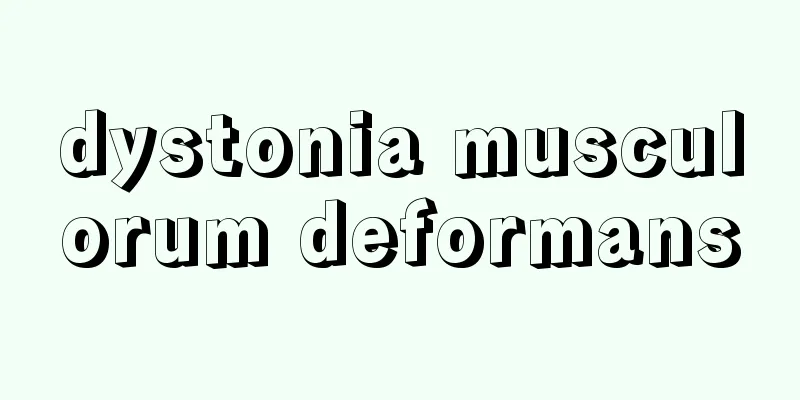Modulation

|
In a communication system, this is the process of generating a high-frequency current carrying information by changing the amplitude, frequency, or phase of the carrier wave according to the amplitude of the signal current to be transmitted. Sounds that we hear, such as voices and music, are air vibrations in the range of 20 Hz to 10 kHz per second. This air vibration is converted into a current of the same frequency and strength by a converter such as a microphone, which is called a signal current. When this current is amplified and added to a speaker, the original voice or music is reproduced. If you tune your radio to 594 kHz, you will hear NHK's first broadcast in the Kanto area. However, since the high frequency of 594 kHz cannot be heard by the human ear, we must think that a signal in the range of 20 Hz to 10 kHz is propagating on this 594 kHz radio wave. In this sense, the radio wave carrying the signal is called a carrier wave, and the process of placing the signal on this carrier wave is called modulation. A carrier wave is a medium for transmitting a signal, and has a much higher frequency than the signal frequency. The reason why a signal needs to be modulated at a high frequency in order to be transmitted is that the signal's frequency is too low to be radiated directly as radio waves. For example, the highest frequency component of an audio signal, 10 kHz, has a wavelength of 30 kilometers, which means that even a quarter-wavelength antenna would be 7.5 kilometers long. It is practically impossible to use an antenna of that length for both transmission and reception. If this signal could be transmitted on a carrier wave of, say, 594 kilohertz, then a quarter-wave antenna would be about 125 meters long, making it practical. Furthermore, if a 10 megahertz shortwave wave were used as the carrier wave, then a half-wave antenna of 15 meters would suffice. This would allow the coils and capacitors that make up the transmitter and receiver to be made smaller, making the entire communications system more efficient. There are three main modulation methods. A method that changes the amplitude of the carrier wave according to the amplitude of the signal current is called amplitude modulation, a method that changes the frequency of the carrier wave is called frequency modulation, and a method that changes the phase of the carrier wave is called phase modulation. When a carrier wave is modulated, symmetrical sidebands are generated on the spectrum centered on the carrier wave, and the combination of these sidebands and the carrier wave results in changes in the amplitude, frequency, and phase of the carrier wave. If a high frequency is used for the carrier wave, it can be modulated with a higher frequency signal. By utilizing this, the spectrum of a wide signal frequency band can be divided into fixed widths, and a different signal is given to each of them to modulate, making it possible to perform frequency division multiplexing transmission with a single carrier wave. Also, by using pulse technology to encode the signal, dividing the time axis into each individual signal to create a pulse stream, and treating this as a single signal to modulate the carrier wave, it is possible to perform time division multiplexing transmission. The former is suitable for amplitude modulation, and the latter for phase modulation. Amplitude modulation is suitable for relatively simple communication systems, while frequency modulation is suitable for transmitting high-quality signals with good frequency characteristics by expanding the frequency bandwidth to the required width. Phase modulation is used for data transmission, taking advantage of the fact that it is most suitable for error-free high-speed transmission of digital signals. Modulation also refers to the process of changing the intensity of light or laser beams in accordance with the amplitude of a signal current, as well as the process of giving brightness to pixels in accordance with the strength of the received signal current in order to form a scanned image on a television cathode ray tube or the like. [Iwao Ishijima] [Reference] | | | | | |©Shogakukan "> The Amplitude Modulation Process Source: Shogakukan Encyclopedia Nipponica About Encyclopedia Nipponica Information | Legend |
|
通信システムにおいて、伝送しようとする信号電流の振幅にあわせて搬送波の振幅、周波数、位相などのいずれかに変化を与え、情報をもった高周波電流を発生させる過程。音声や音楽などわれわれの耳に聞こえる音は、毎秒20ヘルツから10キロヘルツの範囲の空気の振動である。この空気振動をマイクロホンのような変換装置で同じ振動数と強さの電流に変換したものを信号電流といい、これを増幅してスピーカーに加えると元の音声や音楽が再現される。いまラジオを594キロヘルツにあわせるとすると、関東周辺ではNHKの第一放送が聞こえてくる。しかし594キロヘルツという高い周波数が耳に聞こえるはずはないから、この594キロヘルツの電波に20ヘルツから10キロヘルツの範囲にある信号がのって伝搬してきたと考えなくてはならない。この意味で信号をのせてくる電波を搬送波とよび、この搬送波に信号をのせる過程を変調という。搬送波は信号を伝送するための媒体で、信号の周波数より非常に高い周波数である。 信号を伝送するためにどうして高い周波数を変調する必要があるかというと、信号の周波数は低すぎて直接電波として放射させるには適さないからである。たとえば、音声信号のもっとも高い周波数成分である10キロヘルツの波長は30キロメートルで、4分の1波長のアンテナを用いても長さが7.5キロメートルとなる。送信や受信にこのような長さのアンテナを用いることは実際問題として不可能である。 この信号を、たとえば594キロヘルツの搬送波にのせて送信することができれば4分の1波長のアンテナの長さは約125メートルとなるから実用可能となる。さらに10メガヘルツの短波を搬送波として使用することになれば、2分の1波長のアンテナでも15メートルで足りることになる。これに伴って送信機や受信機を構成するコイルやコンデンサーも小型化され、通信システム全体が効率的なものになるのである。 変調には主として三つの方法がある。搬送波の振幅を信号電流の振幅に応じて変化させる方法を振幅変調、搬送波の周波数を変化させるものを周波数変調、搬送波の位相を変化させるものを位相変調という。搬送波が変調を受けると、搬送波を中心としてスペクトラム上で左右対称な側波帯が生じ、この側波帯と搬送波との合成されたものが、搬送波の振幅や周波数や位相の変化となるのである。 高い周波数を搬送波に使えば、より高い周波数の信号で変調することができる。これを利用して幅の広い信号周波数帯のスペクトラムを一定幅に分割して、その一つ一つに別の信号を与えて変調を行うと、一つの搬送波で周波数分割多重伝送を行うことができる。また、パルス技術を駆使して信号を符号化し、時間軸を個々の信号ごとに分割してパルスの流れをつくり、これを一つの信号と考えて搬送波を変調すれば、時分割多重伝送を行うことができる。前者は振幅変調に適し、後者は位相変調に適している。また、振幅変調は比較的簡易な通信システムに適し、周波数変調は必要な周波数帯幅に広げることによって周波数特性のよい高品質な信号の伝送に適する。位相変調はデジタル信号の誤りない高速伝送にもっとも適している点を利用してデータ伝送に用いられている。 また、光線やレーザーなどの強度を信号電流の振幅にあわせて変化させる過程、ならびにテレビのブラウン管などで走査画像を形成させるために、受信信号電流の強弱にあわせて画素に明暗を与える過程も変調という。 [石島 巖] [参照項目] | | | | | |©Shogakukan"> 振幅変調の過程 出典 小学館 日本大百科全書(ニッポニカ)日本大百科全書(ニッポニカ)について 情報 | 凡例 |
<<: Chief of the ministry - Bencho
>>: Venturi tube - Venturi tube
Recommend
Shuho - Practice
A word used in esoteric Buddhism, it can also be ...
sweet flag
…It is a summer-green perennial plant of the Arac...
Izumo Plain - Izumo Heiya
A plain in the northeastern part of Shimane Prefec...
Ivan Vladimirovich Michurin
A Russian/Soviet plant breeder born in Kozlov (no...
Renjaku Shonin - Renjaku Shonin
Renjaku is a name for a merchant who travels arou...
One Minute Natural Intelligence - Ichibujito
〘Noun〙 In the Middle Ages, a land steward held a p...
Function sequence - Kansuuretsu
...A sequence of numbers or functions arranged in...
eulite
...Also contains small amounts of Ca, Al, Ti, Mn,...
Kızılırmak [River] (English spelling)
The longest river in Turkey, it flows from the mou...
dāgaba (English spelling) dagaba
…The most distinctive feature of Sri Lankan templ...
Purse (Frog Purse) - Purse
A general term for bags with a clasp. In the past,...
Country blues
A simple blues style performed by blacks in the ru...
Nakamuraza
The name of a kabuki theater. It is the oldest of ...
al-Manzala, Buḥayra (English spelling) alManzala Buhayra
…A city in the Nile Delta in northern Egypt. Also...
Castel Gandolfo (English spelling)
A town in the province of Rome in the Lazio region...









